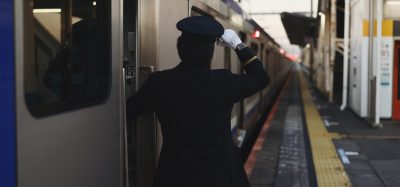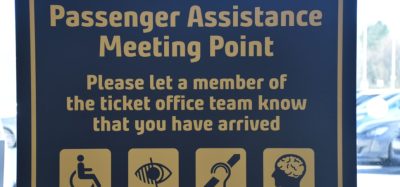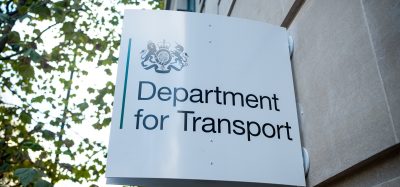HSL-Zuid: ready, steady, go!
Posted: 6 February 2007 | | No comments yet
In 2007, the High-Speed Line South will connect The Netherlands with the European high-speed railway network. By then, high-speed train connections will have been established, not only to Brussels and Paris, but also within The Netherlands itself.
In 2007, the High-Speed Line South will connect The Netherlands with the European high-speed railway network. By then, high-speed train connections will have been established, not only to Brussels and Paris, but also within The Netherlands itself.
In 2007, the High-Speed Line South will connect The Netherlands with the European high-speed railway network. By then, high-speed train connections will have been established, not only to Brussels and Paris, but also within The Netherlands itself.
The southern section of the High-Speed Line, from Rotterdam to the Dutch-Belgian border, was formally delivered to the State on 28 July 2006 by the Infraspeed consortium. Infraspeed comprises Fluor Infrastructure, Siemens Netherlands and Royal BAM Group.
In October 2006, this section was subsequently handed over to ProRail – the railway network managing authority in The Netherlands.
The northern section, from Rotterdam to Amsterdam, was formally delivered to the State in December 2006, and is expected to be handed over to ProRail in April 2007.
Construction
Construction of the High-Speed Line South took place from April 2000 through to 2006. Firstly, the entire concrete substructure was erected, followed by the superstructure, i.e. the complete rail infrastructure. The High-Speed Line connects Amsterdam with the Dutch-Belgian border, via Schiphol International Airport and Rotterdam.
In the south of the country, the railway line is situated directly parallel to the A16 Motorway. It traverses through one of the western suburbs of Breda City, and then it crosses the border at Hazeldonk.
The substructure, including the interfaces with the existing domestic railway network, has been divided in six different Design & Construct contracts. The superstructure comprises one PPP (Public Private Partnership) or DBFM (Design, Build, Finance, Maintain) contract, and was awarded to Infraspeed.
The concrete substructure features 170 civil constructions, of which the bored Green Heart Tunnel and the Hollandsch Diep River Bridge are the two most outstanding. The Green Heart Tunnel measures 15 metres in diameter, while the Hallandsch Diep Bridge measures 2,000m in length – making it the longest span in the Amsterdam-Paris rail connection. Other outstanding features include:
- The aqueduct in the Haarlemmermeer-polder Circular Canal
- The concrete lined Motorway A4 underpass of HSL-South, north of Leiden City
- The 6km long continuous railway viaduct between Zoetermeer City and Bleiswijk Town
- The 4km long cut-and-cover tunnel near Rotterdam Airport
- A couple of submersed river crossing tunnels
In the northern section, HSL-South and the widened A4 Motorway run parallel. There, the widening of the A4 Motorway was undertaken simultaneously with the construction of HSL-South. The same applies to the southern part, where the re-alignment and widening of the A16 Motorway was undertaken simultaneously with the construction of HSL-South. In both these undertakings, the logistic planning and continuous flow of motor traffic proved to be the biggest challenges.
The subsoil in The Netherlands in many places is made up of an unstable peat-like substance.
For that reason, it was decided to construct so-called ‘no-recess’ or ‘settlement-free’ reinforced concrete plates, that are mainly supported by concrete piles. This method of construction prevents the plates from recessing or settling and trains will be able to safely run at speeds of up to 300kph. Conventional railway construction on peaty soil and deploying sleepers that rest on a ballast bed, would no doubt cause the high-speed line to recess or settle unacceptably in places, thus resulting in trains not being able to run at high-speed and requiring frequent maintenance and repair work.
More-over, it was decided to implement ballast-less track (slab track) construction in many places. Tracks and sleepers are anchored in reinforced concrete slabs that in turn are anchored to the ‘no-recess’ concrete plates. The result is a stiff and very sturdy rail system. Additionally, possible wear and tear to tracks and train wheels, as a result of stone grit and dust in case of ballast bed construction, is being avoided. In total, 160km of Rheda2000-NL slab tracks have been laid. Additionally, 40km of ballasted track was laid in places where the sub soil proved to be sufficiently firm.
Noise abatement
Many noise reduction screens have been erected alongside HSL-Zuid. Noise from the new high-speed line should not exceed 57 dbA (decibels). In places where noise levels exceed this legal limit, a decision had to be made between the erection of screens or the construction of earth walls. Dependent on the distance to and the height of buildings, the noise reduction screens vary in height between two and nine metres. The average maximum noise level in living rooms and bedrooms within a dwelling is 37 dbA, without exception. In case this limit is exceeded, extra insulation is put in place by way of double glazing or noise reducing wall lining.
Safety objectives
The safety objectives for HSL-South have been drafted into the Integral Safety Plan. The likelihood of the presence of persons or objects on the track must be virtually eliminated. For this reason, the line is completely protected from the environment by way of fences and ditches. Also, there are no level crossings which arguably cause derailments, collisions with other trains, vehicles or people. All crossing roads are either underpass or overpass to prevent these sorts of tragedies.
Trains are being controlled by means of a sophisticated safety system that is in compliance with the latest European standards. There are no semaphores along the line. Instead, there is GSM computer driven cabin signalling technology.
Also, a great deal of thought went into safety and escape routes in the tunnels. Multidisciplinary disaster mitigation exercises for the emergency services are being held on a scheduled basis.
Track Testing
In the summer of 2005, commencement of tests on the HSL-South section between Rotterdam and the Dutch-Belgian border began. Diesel powered rolling stock was deployed and the maximum speed was 120kph.
By late 2005, the 25 kV AC electrification of the line was complete. From then on, the 25 kV rolling stock was deployed. Initially a Siemens TAURUS electric locomotive carried out tests with speeds up to 256kph. Subsequently, a TGV Thalys which was loaded with monitoring equipment, reached a record speed in The Netherlands of 336.2kph.
In the spring of 2006, a similar testing program commenced on the northern section. During July 2006, a TAURUS had been testing the interface between HSL-South and the conventional domestic rail network in the north of Rotterdam City. Running at 160kph the interface between the ERTMS safety system and the conventional safety system was successfully probed.
In early September, the dedicated TGV Thalys carried out tests on the northern section, reaching speeds of up to 331kph.
Also, in the summer of 2006, the transportation company HSA (a joint venture between Dutch Railways Passenger Division and KLM Royal Dutch Airlines) commenced testing of rolling stock on the new railway line. HSA are particularly concerned with passenger comfort. For that reason, special pressure wave measurements were carried out in August, deploying a Bombardier TRAXX locomotive and a number of carriages. This train, at various speeds, passed a TGV Thalys a number of times in opposite directions, thus measuring the differences in air pressure that occur when two trains meet at speed.
Residual work
After the completion of track testing, a short section of the track, near the town of Rijpwetering, had to be renewed due to a limited horizontal recession that had taken place there earlier.
The subsoil in this area is extremely unstable, which could mean a possible horizontal and/or vertical recession. A grout anchored steel diaphragm wall was put in place over a distance of 800 metres. Subsequently 800 metres of non-adjustable slab track was replaced with re-adjustable slab track. This re-adjustable property will avoid possible extra maintenance and/or repair work and excessive costs in the future.
Infraspeed, the builders of the rail infrastructure, are also responsible for the availability of the HSL-South during a period of 25 years after delivery. Availability should not be less than 99%. In case it would be, Infraspeed’s performance fee is being docked. This is one of the agreed terms of the largest ever PPP contract in The Netherlands, whereby design, construction, financing and maintenance was commissioned to the one consortium.
Another residual work is the placing of a double wall inside the uncovered section of the tunnel in the vicinity of Rotterdam Airport. The original concrete diaphragm walls have developed weak spots as a result of abrupt temperature fluctuations. Over a distance of 1km, double walls are being installed on both sides of the tunnel. The timely placing of these walls will prevent future maintenance and repair work.
These residual works have put some considerable time pressure on the planning.
The line will be completed and available for transport in April of 2007. However, the transportation company is entitled to a period of unrestricted testing. This means that commercial operations will not be able to commence before the summer of 2007.
High Speed Alliance has earlier indicated that they would not have high-speed trains available on 1 April 2007. Neither would the temporary lease locomotives – the Bombardier TRAXX locomotives, capable of speeds up to 160kph – be available prior to July 2007. This seemed to be a convenient coincidence. Moreover, the TGV Thalys trains, that will have to be adjusted to the new ERTMS safety system in France, were expected to become available sometime in late 2007.
Transportation
However, recently it has become clear that it is HSA’s wish to extensively test the temporary rolling stock, which means that commercial operation with Bombardier TRAXX locomotives will not start before December 2007. Also the TGV Thalys trains will start their commercial runs later, as the adjustments to the new European ERTMS safety system will take longer than anticipated. In essence, the 2.2.2 version of the new system appears to be unsuitable for an uninterrupted border crossing, and has to be replaced with the newer 2.3.0 version. This newer version has to be implemented in both rolling stock and rail infrastructure. Expectations are that the adaptation of the safety system will have been completed by March 2008, after which date the High Speed Alliance wishes to embark on another 20 weeks period of testing. Train services with 300kph are envisaged for late 2008 at the earliest, perhaps coinciding with the new railway timetable due to commence in December 2008.
In January of 2008, an independent research agency will probe the effect and necessity of the adaptation from version 2.2.2. to version 2.3.0 of the ERTMS safety system in both HSL-South and Betuwe freight train line.
Also time planning of the adaptation will be scrutinised, as well as the reasonability and feasibility of the test period that has been requested. As a result of these investigations, possible new agreements may have to be entered into as far as the factual commencement of operations of HSL-South is concerned. At any rate, the infrastructure is and will be ready for it.
About the author
Jaap Geluk finished his studies at the Delft Technical University as a Civil Engineer (constructive hydraulic engineering) in 1972. After his studies he worked at different Building Bureaus as a head constructor. In 1997 he worked as Project Manager of Waste Water in the Region of The Hague and set up the project organisation. In 2001, he became a Project Director at the North/South Metro Line in Amsterdam. He finished the tendering process and made the kick off of the construction stage. In 2004, he became as Project Director of RWS HSL-Zuid (high-speed rail link Amsterdam-Dutch-Belgian border.








